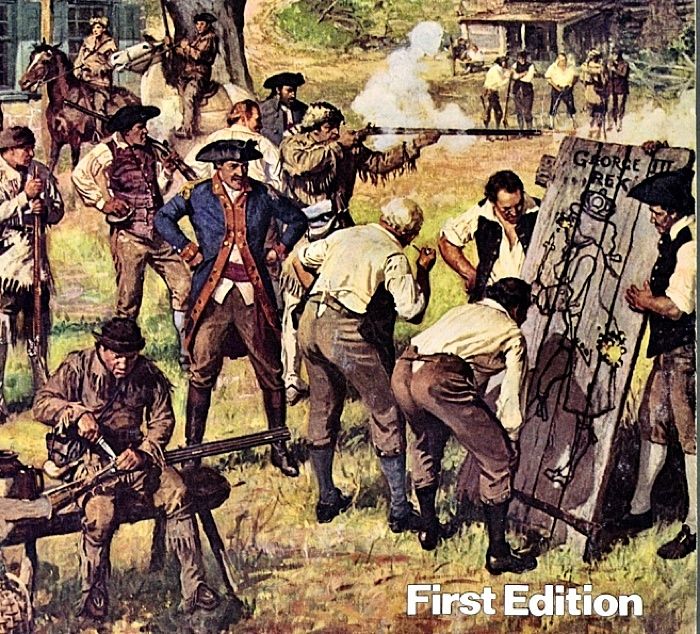A topic which pops up repeatedly is the effective range of colonial rifles. We'll probably never know for sure, but I'm always pleased to find what seem reliable references to events in the day which might shed some light. Consider these two concerning one event. This is right after the beginning of the Rev. war, Boston still under siege...
And a different take on the same event, apparently, quoted in _Rebels and Redcoats: The American Revolution through the Eyes of Those Who Fought and Lived It_, 1957, George F. Scheer and Hugh F. Rankin:
You could conclude a foot-square target, offhand at 150 yards wasn't much of a challenge for the old boys.
Spence
THE VIRGINIA GAZETTE 3
July 21, 1775
PHILADELPHIA, July11. A CORRESPONDENT informs us that one of the gentlemen appointed to command a company of rifle-men, to be raised in one of our frontier counties, had so many applications from the people in his neighbourhood, to be enrolled for the service, that a greater number presented than his instructions permitted him to engage, and being unwilling to give offence to any, thought of the following expedient, viz. He, with a piece of a chalk , drew on a board the figure of a nose of the common size, which he placed at the distance of one hundred and fifty yards, declaring that those who should come nearest the mark should be enlisted, when sixty odd hit the object.””[General Gage, take care of your nose]
And a different take on the same event, apparently, quoted in _Rebels and Redcoats: The American Revolution through the Eyes of Those Who Fought and Lived It_, 1957, George F. Scheer and Hugh F. Rankin:
The riflemen were called up by the Congress from the frontiers of Pennsylvania, Maryland, and Virginia. Down on the Rappahannock River in Virginia, John Harrower, an indentured servant teaching a plantation school, watched a rifle captain choose his company. The number of volunteers far exceeded the number of men called for, so to avoid offending the men, the captain set up a competition: “He took a board of a foot square and with chalk drew the shape of a moderate nose in the center and nailed it up to a tree at one hundred and fifty yards distance, and those who came nighest the mark with a single ball was to go. By the first forty or fifty that fired, the nose was all blown out of the board, and by the time his company was up, the board shared the same fate.”
You could conclude a foot-square target, offhand at 150 yards wasn't much of a challenge for the old boys.
Spence






